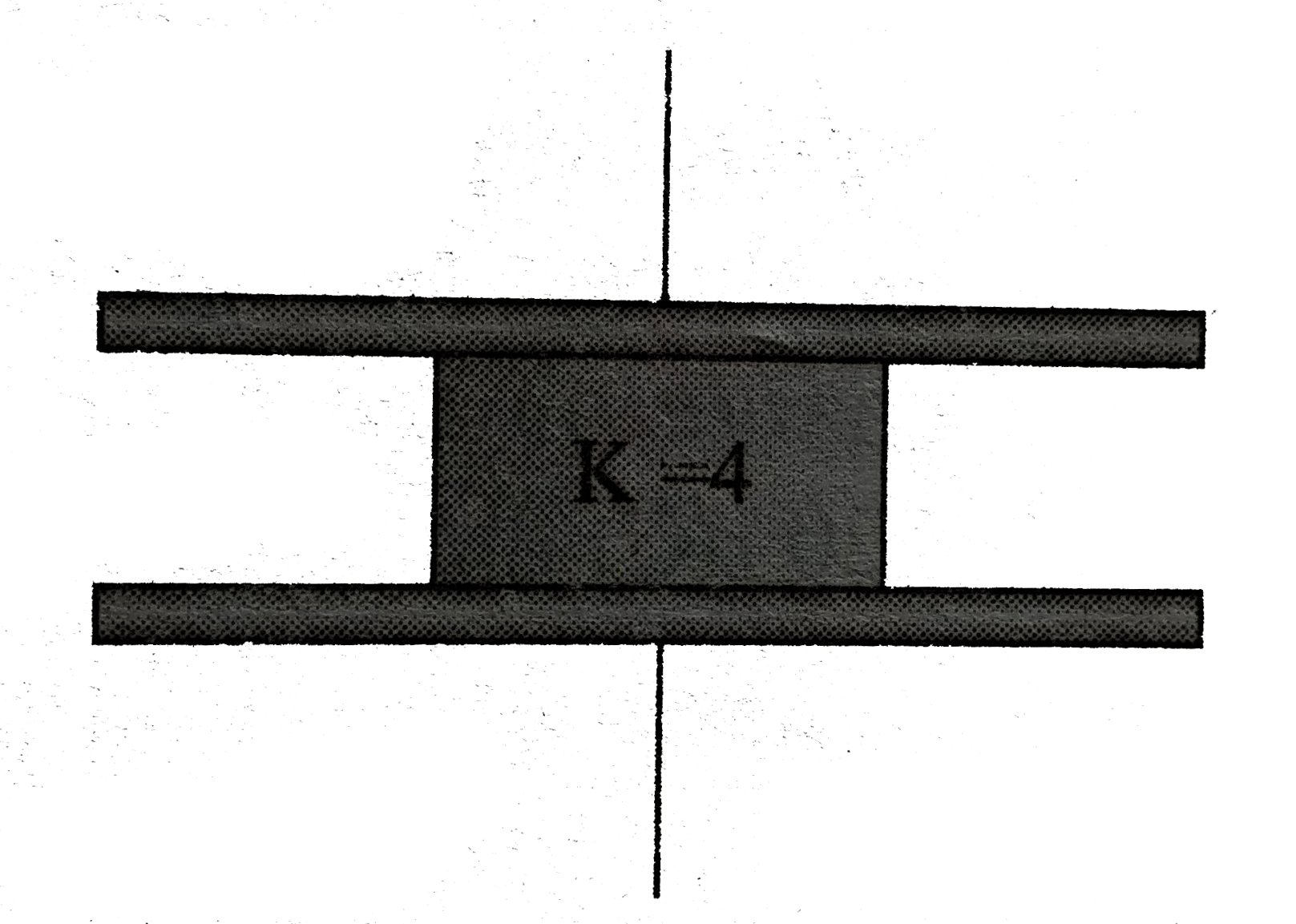A parallel plate capacitor has a capacity 80×10−6F when air is present between the plates. The volume between the plates is then completely filled with a dielectric slab of dielectric constant 20. The capacitor is now connected to a battery of 30 V by wires. The dielectric slab is then removed. Then, the charge that passes now through the wire is
45.6×10−3C
25.3×10−3C
120×10−3C
12×10−3C
The correct Answer is:A
Topper's Solved these Questions
- APPENDICES ( REVISION EXERCISE )BOOK - AAKASH SERIESCHAPTER - APPENDICES ( REVISION EXERCISE )EXERCISE - REVISION EXERCISE (CUTTENT ELECTRICITY )
108 Videos
- APPENDICES ( REVISION EXERCISE )BOOK - AAKASH SERIESCHAPTER - APPENDICES ( REVISION EXERCISE )EXERCISE - REVISION EXERCISE (MOVING CHANGES & MEGNETISM)
95 Videos
- APPENDICES ( REVISION EXERCISE )BOOK - AAKASH SERIESCHAPTER - APPENDICES ( REVISION EXERCISE )EXERCISE - REVISION EXERCISE (MOVING CHANGES & MEGNETISM)
95 Videos
- ALTERNATING CURRENTBOOK - AAKASH SERIESCHAPTER - ALTERNATING CURRENTEXERCISE - EXERCISE - III
39 Videos
- APPENDICES (REVISION EXERCISE)BOOK - AAKASH SERIESCHAPTER - APPENDICES (REVISION EXERCISE)EXERCISE - LAW OF MOTION
91 Videos
Similar Questions
The capacitance of a parallel plate capacitor is C when the region between the plate has air. This region is now filled with a dielectric slab of dielectric constant k. The capacitor is connected to a cell of emfE, and the slab is taken out
View SolutionConsider a disconnected plate capacitor of capacity 10μF with air filled in the gap between the plates. Now one-half of the space between the plates is filled with a dielectric of dielectric constant 4 as shown in .The capacity of the capacitor changes to
 .
.
View Solution
Knowledge Check
The capacitance of a parallel plate capacitor is C when the region between the plate has air. This region is now filled with a dielectric slab of dielectric constant k. The capacitor is connected to a cell of emfE, and the slab is taken out
Acharge CE(k−1) flows through the cellBenegry E2C(k−1) is obserobed by the cellCthe enegry stored in the capacitor is reduced by E2C(k−1)Dthe external agent has to do 12E2C(k−1) amount of work to take the slab out.The capacitance of a parallel -plate capacitor is C0 when the region between the plates has air. This region is now filled with a dielectric slab of dielectric constant K. The capacitor is connected to a cell of emf ɛ and the slab is takenout
ACharge ɛ(C0(K−1) flows through the cell.BEnergy ɛ2C0(K−1) is absorbed by the cell.CThe energy stored in the capacitor is reduced by ɛ2C0(K−1)DThe external agent has to do 12ɛ2C0(K−1) amount of work to take the slab out.Consider a disconnected. Plate capacitor of capacity 10μ with air filled in the gap between the plates. Now one-half of the space between the plates is filled with a dielectric of dielectric constant 4 as shown in .The capacity of the capacitor changes to
 .A25μFB20μFC40μFD5μF
.A25μFB20μFC40μFD5μF
In a parallel-plate capacitor, the region between the plates is filled by a dielectric slab. The capacitor is connected to a cell and the slab is taken out. Then
View SolutionWhile a capacitor remains connected to a battery and dielectric slab is applied between the plates, then
View SolutionA parallel plate capacitor is charged completely and then disconnected from the battery. IF the separation between the plates is reduced by 50% and the space between the plates if filled with a dielectric slab of dielectric constant 10, then the potential difference between the plates
View SolutionIn a parallel-plate capacitor, the region between the plates is filled by a dielectric slab. The capacitor is connected to a cell and the slab is taken out. Then
View SolutionA capacitor with air as the dielectric is charged to a potential of 100 volts. If the space between the plates is now filled with a dielectric of dielectric constant 10, the potential difference between the plates will be
View Solution
